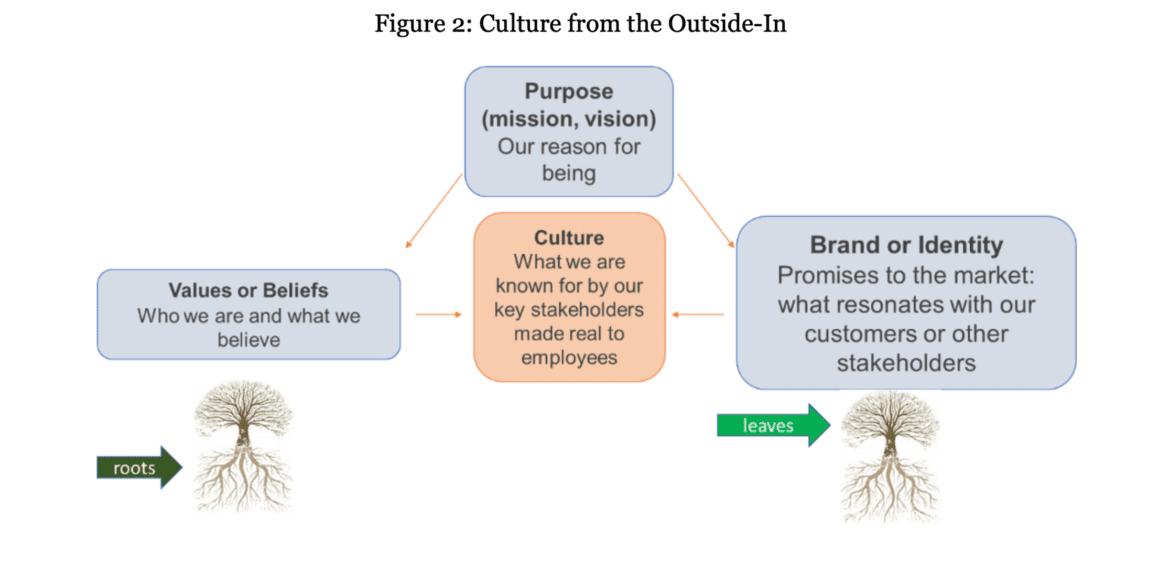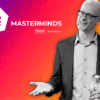

Dave Ulrich- Rensis Likert Professor of Business, Ross School of Business, University of Michigan
The study of culture is not new. In a classic book, anthropologists A. L. Kroeber and Clyde Kluckhohn identified 164 definitions of culture . . . in 1952!
The study of organizational culture has also received enormous attention with the classic maxim: “Culture eats strategy for breakfast.” Although Peter Drucker did not actually say it, he and many others have clearly supported this notion, with many books (over 100!) in recent years entitled “Culture (fill in the blank______)”:
- Code
- Wins
- Decoded
- Is King
- Map
- Question
- Playbook
- By Design
- Renovation
- Change
- Rules
- and so forth
LinkedIn has even recently identified the top 10 voices on company culture.
With so many recent ideas about culture, let me offer a simple playbook for today’s culture agenda to help business and HR leaders navigate the culture issue: Why culture matters, what culture means, and how to create or change a culture.
Why Culture Matters
Research shows that corporate directors, financial auditors, and business executives at Davos believe that “culture” matters and is an increasing challenge in today’s organizations, particularly with hybrid work when people may not be face-to-face.
In the COVID world—when many employees worked at home often isolated from each other—cultural and social cohesion has declined, often leading to lower employee experience scores and increased mental health challenges.
Everyone readily accepts that organization “culture” exists and has impact. Toxic cultures have dysfunctions of hostility, mistrust, selfishness, scarcity thinking, and insensitive leaders who lower productivity, employee retention, strategic reinvention, investor confidence, and customer satisfaction. Abundant cultures have the opposite positive effect. Creating the right culture will enable organizations to flourish and win in the marketplace.
What Culture Means
As noted above, “culture” has many definitions, even in organization settings. Let me suggest three historical waves of looking at organization culture and an emerging fourth wave (see figure 1).

Wave 1: Culture as values and behaviors. Individuals and organizations have values that shape behavior. These values can be identified as an organization’s culture, and the behaviors may be tracked to determine the cultural type.
Wave 2: Culture as systems or climate. A company culture shows up in how information, decisions, diversity, accountability (and other processes) are managed. These systems determine the climate of an organization.
Wave 3: Culture as patterns or norms. Anyone entering a company recognizes that unspoken rules or expectations of how work is done. These patterns become accepted ways of working.
All of these three waves of culture (values, systems, and patterns) focus on what happens inside an organization. In some nomenclatures, they are the “roots” of the tree and are embedded in stories, history, and rituals, both spoken and unspoken. These internal definitions of culture thrive when employees are together to share values, work processes, and experience common norms.
Wave 4: Culture as identity in the marketplace. An emerging view of culture is to ensure that it is the “right” culture, which means that the culture inside an organization creates value for stakeholders outside (customers, investors, and communities). In this outside-in view, culture is about the value of the values to a customer or investor and the extent to which internal systems and norms increase customer share, investor confidence, or community reputation. This outside-in view of culture is less about the underlying roots off a tree (which are often difficult to change) and more about the leaves of the tree, which metaphorically change in different seasons.
This outside-in view of culture integrates purpose, values, and brand to create the “right” culture, the one that creates value to all stakeholders. In this cultural focus, employees creating value for external stakeholders matters much more than how employees work. Culture change begins by identifying what an organization is trying to be known for in the marketplace. Then we make that external identity real to employees inside the organization (figure 2).

How to Create or Change a Culture
My colleagues and I have been involved with numerous culture change transformations. More often than not, they start with laudatory rhetoric but then fizzle with few sustainable changes. When we have seen culture transformation succeed, it starts with the business case for culture (why culture matters), then uses the outside-in definition of culture (what culture means), then gets implemented in five steps (see figure 3).
Step 1: Define the desired culture. Ask internal leaders and external customers what your organization should be “known for” to be effective. This identity becomes synonymous with the desired brand that encourages customers to buy and investors to invest. Work to create a high unity (over 80 percent) on the answer to this question.

Step 2: Build an intellectual, top-down agenda. The desired culture needs to be communicated over and over and over again. This shared cultural message may appear in internal speeches, town hall meetings, social media, bulletins, and other communication mechanisms. Simple and redundant messages shape an intellectual agenda of what the desired culture should be.
Step 3: Encourage a behavioral, bottom-up agenda. Cultural ideas and messages flow down—behaviors and actions flow up. Ask employee groups throughout your organization what they can do more of or less of to make the desired culture real in their day-to-day activities. Cultural messages change employee behaviors.
Step 4: Design and deliver a process, side-to-side agenda. Culture gets woven into organization process around people (hiring, training, paying), strategic decision making, resource allocation, and other governance choices. The organization processes should reinforce the desired culture.
Step 5: Create a leadership brand. We have proposed that the right leadership competencies should be aligned to promises made to customers, creating a leadership brand. Employees often do what leaders model, and when leaders think and act consistent with customer expectations, their work reinforces the desired culture. We have encouraged firms creating advertising programs to allocate a percent of this external marketing budget to internal leadership training on the same issues.
These five steps are not a perfect script for the culture change agenda, but they suggest a simple (not simplistic) playbook to approach culture change that creates value for customers and turns cultural aspirations into daily actions.
Implications
So what does this culture playbook suggest?
- Don’t just talk about culture ideals, tie them to customer and investor value so that culture has marketplace impact.
- Don’t just diagnose what is happening with culture but offer guidance about what should happen to create the right culture.
- Don’t measure culture with rhetoric but with results from employees, strategy, customers, and investors.
- Don’t let culture become an abstraction but a set of concrete and integrated activities built around intellectual, behavioral, and process actions.
- Don’t hesitate to make sure that leaders at all levels think, act, and feel consistent with the desired culture.
Net lesson: The culture playbook matters and is an agenda worth pursuing!
………

Dave Ulrich is the Rensis Likert Professor at the Ross School of Business, University of Michigan, and a partner at The RBL Group, a consulting firm focused on helping organizations and leaders deliver value.
Written by: Dave Ulrich
Culture Dave Ulrich Future of Work HR Strategy Leadership
Previous post

- 3421
labelVideos today2022.05.03.
How Performance Management is Killing Performance: The 8 Fatal Flaws of Performance Management
Tamra Chandler’s presentation at The HR Congress Tamra Chandler is the author of “How Performance Management is Killing Performance And What To Do About It.” Most people are familiar with [...]
Similar posts

labelArticles today2024.10.21.
The success-recipe to build agile and future-ready organizations in 2025 and beyond








Post comments (0)